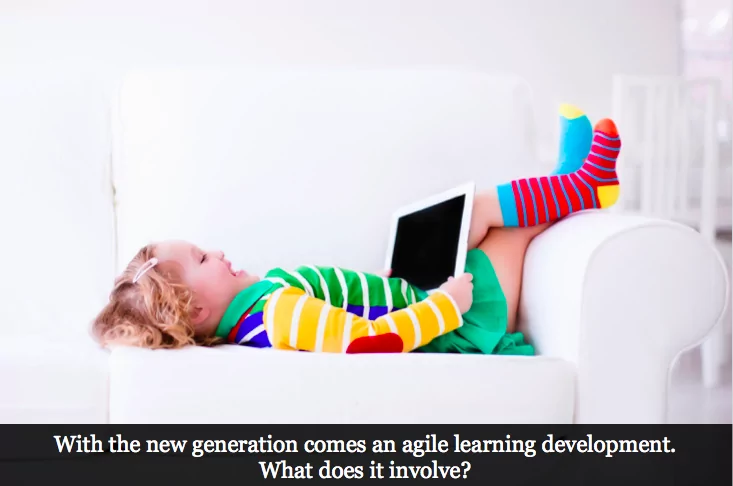Agility in the eLearning Environment

Agility has become something of a buzzword in the business world in recent years. But what does it really mean and how can it apply to the world of corporate learning and eLearning?

Most dictionary definitions of agility highlight two different aspects of agility’s meaning, including the physical (being able to move quickly and easily; nimbleness) and the mental (being able to think and draw conclusions quickly; intellectual acuity). In the business world, this has been translated into something a little more nuanced because of fundamental and profound shifts in the organizational landscape. Leadership and change guru Peter Vaill coined the phrase “permanent whitewater” (source) to describe this new environment where the pace of change becomes ever more rapid. Here’s how another writer, Michale Hugos characterizes the shift:
The relentless pursuit of industrial efficiency no longer yields the profits it once did because it requires a level of business predictability that no longer exists. Instead, the Internet and global video and telecom systems provide a massive and continuous flow of data that causes the whole world to behave like a giant stock market, with all the volatility and uncertainty that goes along with such markets. Responsiveness now trumps efficiency (source).
And therein lies the key to understanding agility in the corporate environment – it’s about responsiveness to the permanent whitewater environment. For larger, more complex organizations, this can feel like trying to turn a dinosaur into a puma – a daunting but necessary task in the modern world (source). How this is being applied to eLearning in the corporate setting is primarily through a movement that calls itself Agile Learning Development.
First its important to understand the predominant model in learning development, which is ADDIE, and acronym that captures the following five steps in a learning development process:
- Analysis: Picking apart the business problem being addressed by the learning in order to come up with learning objectives and outcomes.
- Design: The content ideas are then fleshed out into a eLearning course or module designed to achieve the objectives and outcomes.
- Development: The content is then passed onto developers to come up with the appropriate software and delivery methods.
- Implementation: The course or module is rolled out to learners.
- Evaluation: Assessment occurs to find out if it achieved the objectives. If not, it’s tweaked and redesigned for improved outcomes.
So what’s wrong with this approach? It seems logical and comprehensive, right? Yes, but here’s the thing – it was developed back in the mid-1970s, which means it often isn’t nimble enough to respond quickly in today’s permanent whitewater environment. What’s needed is greatly agility that can compress that development cycle down as much as possible while still achieving all the desired objectives and outcomes. And that is the point of agile learning development. What does it involve?